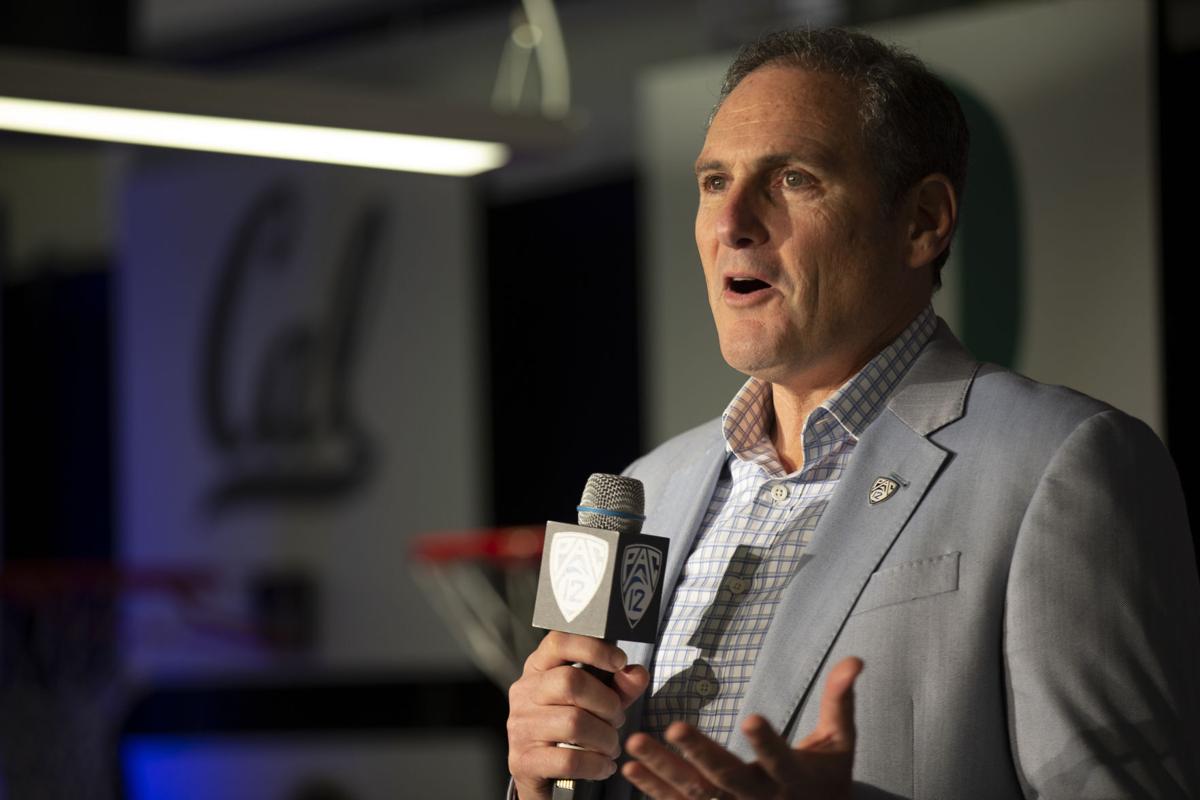Struggling to find commissioner candidates who fit their competing priorities, the Pac-12 presidents are considering a governance structure unprecedented in college athletics by which the job would be effectively split into two roles, according to sources with knowledge of the process.
Exactly who would fill those positions remains unclear as the search enters its fourth month. However, one name being actively discussed, per sources, is Amy Brooks, a former Stanford basketball player who currently serves as the NBA’s president for business operations and chief innovation officer.
The degree to which Brooks has interest in joining the conference isn’t known. Brooks has never worked in college sports and has no background in football operations. Her expertise is on the business side: Prior to joining the NBA, she worked for Bain and Co., the global management consulting company.
That Brooks has emerged as a potential candidate lends clarity to the competing dynamics at the heart of the Pac-12’s search to replace outgoing commissioner Larry Scott, whose tenure ends in June.
The presidents and chancellors are interested in hiring someone from the sports business world who can maximize revenue opportunities, starting with the media rights negotiations that are expected to begin in 18-24 months.
But they also recognize the importance of finding a leader who understands the challenges and needs of the campuses.
To date, sources said, the presidents haven’t identified a single candidate who meets their standards for both criteria. As a result, they’re mulling what would effectively be a package deal.
Under the unprecedented structure, a sports business specialist would be hired to sit atop the conference as the official commissioner. But the presidents would also hire someone to serve as a de facto co-commissioner, whose role would be to work with the athletic directors.
The commissioner and the co-commissioner — one source framed the role as being a “liaison to the ADs” — would be hired together.
When asked how the conference chain of command would work for campus-specific issues (i.e., would the liaison have final authority, or the commissioner), one source said: “I have no idea how it would work.”
Sources stressed that the search could conclude with the Pac-12 hiring a commissioner in the traditional sense, as the ACC did recently in appointing Jim Phillips, the former Northwestern athletic director. (Turnkey handled that search, as well.)
But the unprecedented, two-person command structure is gaining traction as the best solution for the competing priorities.
“They don’t know what to do,” one source said. “But there is a lot of pressure on the presidents to get someone for the campuses.”
Indeed, Scott’s management style has come under intense criticism in Turnkey’s meetings with campus administrators and various conference stakeholders.
Hired in 2009, he had no background in college sports and was too often viewed by the athletic directors as placing the needs of the conference office — his office — above those of the campuses.
For the better part of his tenure, deep friction existed over the approach to policy-making, conference expenses and overall priorities in San Francisco.
With the conference struggling competitively and financially, the presidents have placed a high priority on improving collaboration between the conference office and the athletic departments.
And with momentous changes coming to college sports in the next three or four years, there is a clear need for expertise in the issues, especially as football is concerned.
“They need someone with juice in college sports,” a source said.
However, the Pac-12’s lagging revenue has created a desperate need for cash — hence the interest in hiring a commissioner who can generate revenue effectively and maximize the Pac-12’s value in the upcoming media rights negotiations.
“That’s fine,” a source said, “but what’s an expert in TV going to be doing for the eight years after the deal is in place?”





